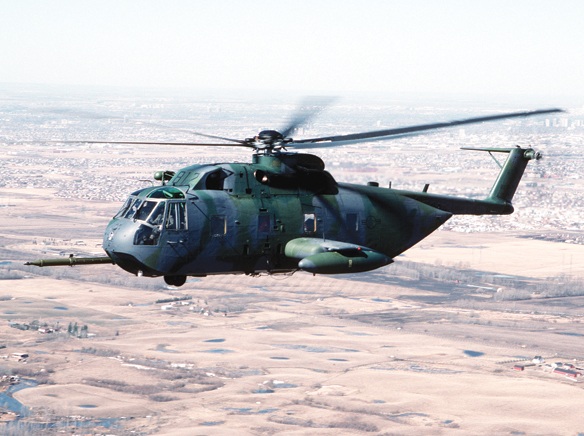As told to Michael H Pazeian. First of two parts.
I left the U.S. on Jan. 27, 1968 and had an intervening stop at Clark AB in the Philippines for Jungle Survival School, a seven-day course indoctrinating us on the skills needed to survive the jungle should we ever be shot down by the enemy.
While there and having to live off the land as well as prepare our own hammocks, etc., I spent a lot of soul searching time praying and talking with God. The result was that I felt God saying that I was not to fear the situations that I would encounter for the next year in Vietnam, that He would be with me, protecting me on my missions, and that I would return to my family when my year’s tour was over. That gave me great peace and allowed me to function during combat flights where other pilots became very fearful. I mentioned this assurance several times to other pilots as my source of peace and hope. Many poo-poo’d my feelings, claiming I could not be assured of my return alive at the end of my tour. But I believed it, and I’m here to tell about it.
I arrived in Vietnam on Feb. 7, just after the big NVA and Viet Cong TET Offensive. Our HQ. Air Rescue & Recovery Service in Saigon assigned the three of us who had been very close during our training days to Da Nang AB in Northern So. Vietnam (I Corps). The summation of my year in Vietnam was flying 324 hours of combat and combat support in the HH-3E, involved with some 26 rescue missions, making 17 pickups that saved their lives (pilots that had bailed out, Special Operations Groups road watch team members, crew members of aircraft that had crashed, overrun positions with ground troops, and a person crushed on a barge in the South China Sea). I did get three Rest and Recuperation (R&R) leaves during my tour, one to Tokyo for eight days, six days in Hawaii meeting my wife and enjoying the Islands, and a seven-day trip to Bangkok, Thailand. They helped break up the tension of flying combat.
Feb. 16 – Finally Getting to Fly
We took our flight briefing and got off the ground at 2:40 p.m. There were two Jolly Greens scheduled with Lou Gang and Stan Mc Ghan as instructor pilots. These were highly experienced pilots that had been in-country for most of the year. So, we felt really good about getting our “dollar ride” with them. We flew all around the Da Nang harbor checking out all the helicopters pads and making approaches and touch downs at several of them. Some were very tricky to get into, being at the foot of a steep mountain or between narrow buildings. So, we were given extra instruction and allowed to attempt the landings several times. Then we flew out into the Gulf and contacted a destroyer, the USS Southerland, who cleared us for an approach and landing on the fan tail (rear deck) to take on fuel. The maneuver was called, “Hi Drink.” It was quite a thrill to hover over and land on a destroyer’s deck. Then we flew up off Hue to the hospital ship, “Repose,” where we landed on the rear deck several times for practice. We would be doing this many times during the year we were over there, bringing in the wounded. We were shown the landing pattern at Da Nang and landed after an hour and 45 minutes of flight time. It helped cut the ice for us to see where things were and how helicopter operations were conducted there at Da Nang. As soon as we were debriefed we all headed for the O’ Club where steaks were being served.
Mission 12 – Sunday, June 9:
Awakened at 6:30 a.m. for a scramble at 6:55 to rescue the two survivors that we heard about yesterday. An Army Mohawk (OV-1) had gone down at 230°/35 miles SW of Da Nang. It ended up being a simple mission as we encountered no enemy ground fire and were able to spot them right away under the thick jungle canopy. We had them on board at 8:20. The survivors were Major H. F. Benson and SP/4 James Baird. That makes my pickup numbers 10 and 11 and the squadron’s 318 and 319.
Got off alert when we returned to Da Nang and went directly to 10:00 chapel services. Ate lunch and went back to the chapel for our Church of Christ services. The Da Nang orphanage kids sponsored by the Church of Christ joined us. I questioned whether it was possible or not to adopt one of them, was told it was possible.
This day starting off so well with the rescue mission and worship turned out to be one of our most tragic for us in rescue. Jolly Green 23 was shot down in a rescue attempt of an A-4E (Hellborne 215) pilot west of the A Shaw Valley. The crew, Lt. Jack Rittichier (USCG) – RCC, Capt. Richard Yeend – Copilot, SSgt. Elmer Holden – FE, and Sgt. James Locker – PJ, were all killed as the Jolly exploded upon impact. Our Air Rescue motto, “That others may live,” was never so meaningful to all of us who flew these combat missions to save lives and keep them from being captured by the enemy than it was this day. The Lord was with me this day.
A bit about the crew: Jack Rittichier and I had started to become close flying buddies. We had flown or been on alert together seven consecutive times from May 21st to June 6th, an oddity in scheduling.
Pilots of the crews were changed around at random and rarely flew twice in succession together. I flew with him first on April 25 on a mission as high bird, backing up the low bird who made the pick-up with no hostile fire, pretty easy mission. His copilot. Richard Yeend and I go back to the first day of helicopter training at Sheppard AFB, Wichita Falls, Texas, in June of 1967. We met while walking into the training building for the first time. He had come from flying B-52s as I had. We graduated together as fully qualified helicopter pilots and were sent to Eglin AFB, Ft. Walton Beach, FL, to be trained in rescue operations. Elmer Holden was one of our better Flight Mechanics/Engineers. I had flown with him on numerous occasions and he was involved with our pickup on May 16. James Locker was one of the premier Para rescue/Para medic/Para jumpers (PJ) along with most decorated Steve Northern. James flew with us on our ill-fated rescue attempt of the Army Recon Team, RT Alabama, on May 4, replacing Walt White who was wounded the previous night when we tried to make the rescue then.
A lot of us hung around the Ops Control Room where we had VHF, UHF, and LF radios that we could listen to when missions where going on. We were hoping and praying that the crew might have gotten out safely. But such was not to be. Whenever I get a chance to see the “Healing Wall,” the miniature Vietnam Veterans Memorial that travels and is displayed all over the US from time to time, I pay reverence to these four men who meant so much to us as fellow crew members.
A big mission kicked off just above the DMZ earlier in the day. Major Olsen and Lt. Col. Klinkert in JG 31 penetrated the coast to make the pickup of an F-105 pilot after he ejected from being hit by 37 mm AAA near Xom Quan, NVN the day before. Also, Major Simpson and Capt. John Hannan picked up two F-4D crew members off the coast near the DMZ after they ejected from AAA damage.
In addition, Jolly Green (# unknown) (Captains Jerry Griggs and Harry Hagan) plus Jolly Green 22 (Captains Brennan and Ashley) attempted to rescue the pilot of Hellborne 215 before Jolly Green 23 (Rittichier and Yeend) was called in for their fatal attempt at the rescue. Both the other Jolly Greens were driven off by enemy fire on each attempt at the rescue. Griggs and Hagan took multiple hits and had to make an emergency landing, limping into Khe Sanh on one engine. It was a very busy day to say the least for our rescue forces.
I was in country from Feb. 7, 1968 to Jan. 21, 1969, after logging 324 hours of combat and combat support in the HH-3E, involved with some 26 rescue missions, making 17 pickups.




